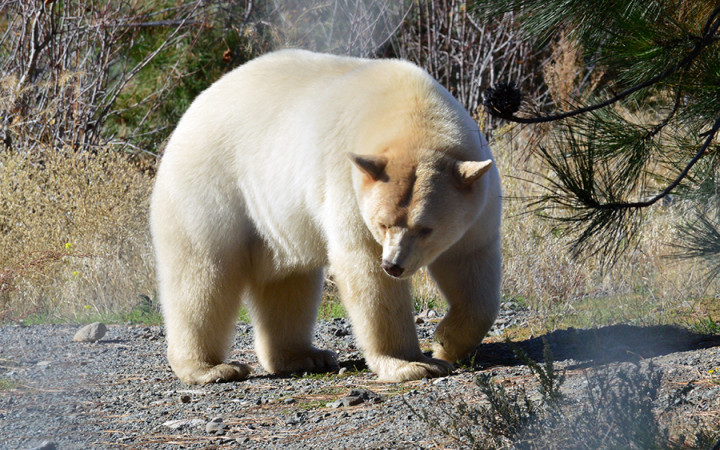Do you ever have the desire to go explore some place completely off the beaten path? When your day-to-day routine gets you stuck in a rut, it can be therapeutic to break the mold and experience something completely fresh and new.
For some place especially remote, how about traveling to the Great Bear Rainforest off the west coast of Canada? There you'll find about 25,000 square miles of mountains, glaciers, islands, fjords, lakes, and dense forests stretching across 250 miles of coastline in British Columbia, south of Alaska.
This beautiful, mysterious land has enchanted First Nations peoples for hundreds of years. (The native peoples who occupied the United States are called American Indians or Native Americans. Canada refers to their indigenous peoples as First Nations peoples.)
Here you'll find abundant wildlife, from grizzly and black bears to wolves and wolverines. In the waters, you'll see humpback whales and orcas. You might even be lucky enough to spot a white bear.
Although the Great Bear Rainforest is a ways north and not far from Alaska, you won't find any polar bears there. Instead, the white bears that live there are a unique subspecies of the North American black bear.
That's right: they're white black bears. Weird, huh? They go by several different names. Scientifically, they're officially known as Ursus americanus kermodei, or the Kermode bear. They were named after Frances Kermode of the Royal British Columbia Museum. First Nations people call them mooksgm'ol ("white bear") or "spirit bears."
They're not albinos. Instead, Kermode bears are the result of a genetic mutation. If a bear inherits a particular recessive gene from both parents, it will be born white. Neither parent has to be white. They just have to carry the recessive gene. That's why it's common for Kermode bears to be born to black bear parents.
Kermode bears can be found almost exclusively in the Great Bear Rainforest. In particular, two islands — Princess Royal Island and Gribbell Island — have especially high concentrations of Kermode bears.
No one knows for sure how many Kermode bears there are in existence. Some believe the estimate is as low as only a few hundred, while others believe there may be 1,000 or more. Local First Nations people are very protective of their spirit bears and keep a close eye out to make sure no one hunts them.
Although spirit bears might stick out when surrounded by other black bears, scientists have determined that their white coat gives them an advantage when fishing for salmon. Especially during the day, salmon appear to be less scared of white objects above the water than they are of black objects. Some scientists believe this fact helps to explain why Kermode bears continue to exist and thrive in the area.





